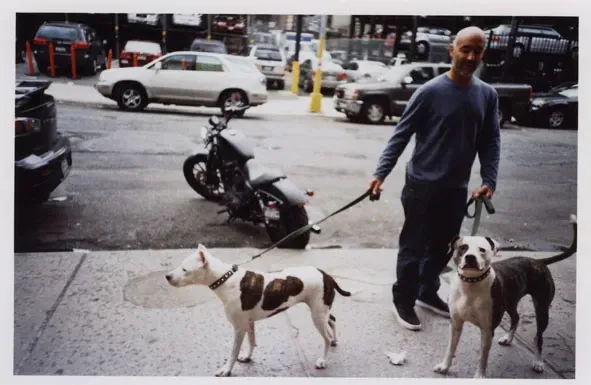Taking the Lomo for a NYC walk
Written by

Biting the Big Apple: Ila Couch takes the Lomo LC-A for a test drive around the streets of New York City and rediscovers her love of analog photography.
* * *
There are endless ways to kill time in New York but I’m putting on hold any plans to eat my way around the city until I get my next steady gig. In the meantime, for the price of a slice of pizza and a cappuccino I have begun reacquainting myself with the joys of analog photography.
Up until this year the New York Lomography Gallery in Greenwich Village was home to the Salvation Army. Brick-a-brack and racks of second hand clothing have given way to glossy floor to ceiling photo montages and rows of plastic cameras. In the back of the store my two hour, $10 work shop begins with a history lesson on Lomography.
As the story goes, it all started back in the early 80’s when the Russians decided everyone in the Soviet Union should have access to a cheap point and click camera. Taking inspiration from the Japanese, they created the LOMO LC-A. Had it not been for a design flaw in the lens creating a quirky vignette effect in its developed prints the camera would have become obsolete. Thanks to some ardent admirers, clever marketing and the creation of additional cameras and accessories the LOMO camera and Lomography has developed a cult following.
I don’t know what the LOMO LC-A used to go for back in the day but at $280 it can’t be considered cheap. Still the best part of the $10 workshop is the fact it includes a loaner camera and roll of film. Before we head out onto the streets our guide tells us about the Ten Golden Rules of Lomography seeming most enthusiastic about rule four: Try the shot from the hip!
In the days before digital the most common piece of advice I heard when it came to shooting was don’t worry about wasting film. Compared to the camera it was the cheapest part of photography yet I still found it hard not to deliberate over each frame. Unlike flilm, digital photography is like peaking at your Christmas presents before Santa gets a chance to deliver them. As I step outside to overcast skies I aim to embrace rule number 4 and begin to enjoy not knowing exactly what it is I’ve captured.
There’s a switch to change the focus but no way of checking its accuracy so already I’m having to give up some control. Dude in a checked shirt runs by. Click. Little boy holds Dad’s hand crossing the road. Click. Baby in a pushchair. Click. Man on a bike, pensive canine, graffiti etched footpath. Click, click, click. Guy walking his dogs. Click. “Hey! “You don’t want to take a photo of the other one?” he says unaware I have no idea what I just took picture of. He pauses to pose. I square up the shot in the viewfinder. Click.
With my flow interrupted I start using the viewfinder to frame my shots. Book spines on a sidewalk table, recovery position man lying in the dirt, circular grate, empty tables & chairs, vintage t-shirts hanging from a chain fence, my reflection in a mirror. It must be time to eat. Falafel fixings. Click. Man behind the baklava case. Click. Back on the street I’m back to shooting surreptitiously, the odd person catching me out with a smile. As I start losing light it’s time to go back to the store, return the camera and hand in my film for developing.
The following week when I pick up my photos I sit with the envelope unopened in my lap for awhile. It's been six years since I've developed a roll of film and regardless of how I feel about the results I'm enjoying this feeling of being back in time before there was a choice between digital and analog. I am not ready to drop the $270 it would take to own the LOMO LC-A but it’s made me realise how much I’ve missed film and if anything rekindled that love affair. It’s been $25 ($15 for processing) well spent and without a doubt I’ll be back for the Lubitel workshop!